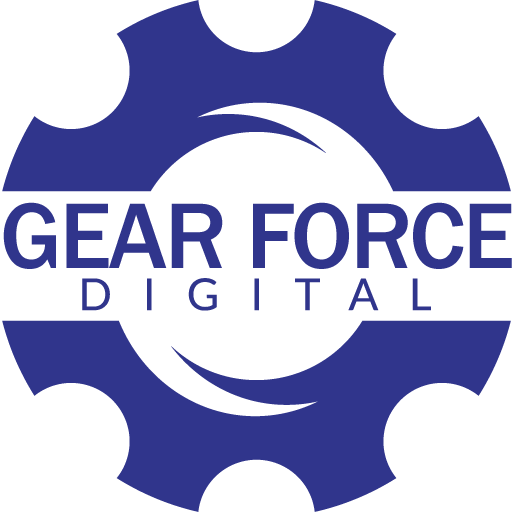The rapid advancement of artificial intelligence (AI) has sparked a major conversation about the future of work. For many, the question lingers: Will AI replace human jobs, or is it simply evolving the way we work? In truth, AI isn’t as much about taking jobs away as it is about augmented collaboration making human work more efficient and even creating entirely new roles. But, if we don’t understand the evolving landscape and learn how to work alongside AI, we risk being left behind.
This article will dive into the reality of how AI is reshaping job roles, creating opportunities for those who are willing to adapt, and why embracing AI today will put you ahead of the curve tomorrow.

AI: Replacement or Augmentation?
Historically, the fear surrounding new technology has often been based on the idea that machines will eventually replace human workers. This is not a new narrative. In the early days of industrialization, people feared that machines would render laborers obsolete. But time and time again, we’ve seen that technological advances lead to job transformation, not elimination.
With AI, we’re witnessing the same pattern. Instead of replacing workers, AI is augmenting their capabilities. It is enabling us to automate mundane tasks, make smarter decisions faster, and even tackle complex problems that would otherwise be time-consuming or impossible for a human to solve alone.
Take, for example, industries like healthcare, finance, and marketing. In the past, many of these industries relied heavily on manual processes sorting data, making predictions, or analyzing large sets of information. AI tools are now being used to assist humans in those tasks. The role of the worker is evolving from one that performs repetitive tasks to one that supervises, adjusts, and makes decisions based on the insights provided by AI systems.
AI’s Role in Job Transformation
Rather than replacing jobs entirely, AI is reshaping job roles. It’s augmenting the tasks we already do, allowing us to work smarter, not harder. Let’s break down some of the emerging AI-assisted workflows that are making waves in different industries:
1. AI in Content Creation
For creators and marketers, AI-powered tools like content generators, chatbots, and personalized recommendation engines have revolutionized how we produce and interact with content. Tools like GPT-3, which powers applications like ChatGPT, can help marketers and content creators draft copy, generate ideas, and even write entire articles in a fraction of the time it would take a human. However, rather than replacing writers, these tools are assisting them, enabling them to produce more content in less time, focus on higher-level strategy, and deliver more tailored experiences to audiences.
Example: Marketers can use AI to quickly generate ad copy or blog posts, and then spend more time optimizing that content for SEO, audience engagement, or strategic positioning. AI doesn’t replace the creativity or strategy that humans bring to the table; it just allows humans to focus on what truly matters: meaningful engagement with their audience.
2. AI in Customer Service
In customer service, chatbots and virtual assistants powered by AI are already transforming workflows. Instead of completely replacing human agents, AI chatbots handle initial queries, provide quick answers, and escalate complex issues to human representatives. This improves efficiency and customer satisfaction by ensuring that customers get faster responses to their basic inquiries.
Example: A customer who needs to track their order status can get an immediate response from an AI chatbot. If the query is more complex, the chatbot can pass the conversation to a human agent. This enhances the efficiency of human workers and allows them to focus on higher-value tasks.
3. AI in Healthcare
AI is also making strides in healthcare, from diagnosing diseases to assisting in drug discovery. For doctors, AI-powered tools like diagnostic algorithms and predictive models are enhancing their decision-making abilities by processing vast amounts of data in a matter of seconds. These tools don’t replace doctors; they simply provide them with additional insights to improve their decision-making process.
Example: AI systems can help detect early signs of diseases like cancer by analyzing medical images more accurately than a human could. But the role of the doctor remains crucial in interpreting the results, determining the next steps, and communicating with patients. AI in healthcare is a collaborative tool rather than a replacement.
4. AI in Marketing and Advertising
AI is transforming how we target, engage, and convert customers. Marketers are leveraging AI for tasks such as segmentation, personalization, and predictive analytics. AI tools can analyze consumer data and predict trends, helping marketers create highly targeted campaigns. The ability to automatically adjust campaigns based on real-time data is a huge advantage. AI doesn’t replace marketers; it makes them more strategic, allowing them to focus on creative and high-level tasks while AI handles the data crunching.
Example: AI can optimize paid ad campaigns by adjusting bids, targeting parameters, and ad creatives in real time. Marketers can then use their time to analyze results, refine messaging, and make broader strategic decisions.
Why Learning to Collaborate with AI Puts You Ahead of the Curve
Now, here’s the big question: How can you stay competitive in this AI-driven landscape? The answer is simple: learn to collaborate with AI.
- Develop a Growth Mindset: Instead of fearing AI, embrace it as a tool that can enhance your skills and make you more effective at your job. Learning how to work alongside AI will set you apart as someone who understands the future of work.
- Embrace Automation: AI excels at automating repetitive tasks. By adopting automation tools early, you free up more of your time for creativity and high-value work that requires human intelligence and emotional judgment.
- Stay Informed: AI is evolving fast, and staying updated on the latest advancements is key. Participate in AI-related workshops, online courses, or industry conferences. This will not only give you the knowledge you need to use AI effectively, but it will also ensure that you stay ahead of the curve.
- Upskill Regularly: Don’t just learn to use AI learn how to leverage it strategically. AI-assisted workflows are changing how we do our jobs, and staying on top of these changes requires a commitment to continuous learning and adaptation. By developing new skills in AI, you position yourself as a leader in your field.
- Collaborate with AI, Don’t Compete: AI isn’t something to fear it’s a tool that, when used correctly, can make you more productive and more valuable. Start small, experiment with AI tools, and find ways to incorporate them into your daily workflow. This gives you a chance to innovate without the stress of trying to keep up with constantly changing trends.

The Future of AI and Jobs
The future of AI isn’t about machines replacing humans; it’s about humans and machines working together. AI is reshaping the way we work, creating new opportunities for those who are willing to learn and adapt. By collaborating with AI rather than competing with it, you position yourself for success in a world where AI plays an integral role in virtually every industry.
AI isn’t coming for your job; it’s here to make it easier, faster, and more valuable. By learning to use it effectively, you’ll not only optimize your time, but also improve your skills and position yourself to lead in an increasingly technological market. Don’t wait for the digital revolution to catch up with you; embrace artificial intelligence now and start building the future of your career.
It’s time to take control.
If you haven’t started integrating AI into your workflow, now is the time. Explore new tools, get training, and take your productivity to the next level. Gear Force Digital is here to help you make the most of what artificial intelligence has to offer.
Gear Force Digital
www.gearforcedigital.com
Email: ignite@gearforcedigital.com





